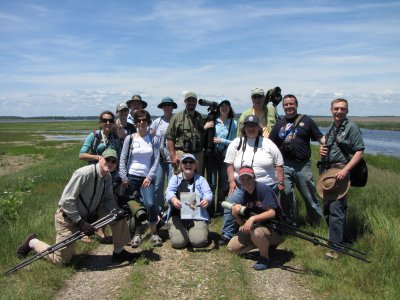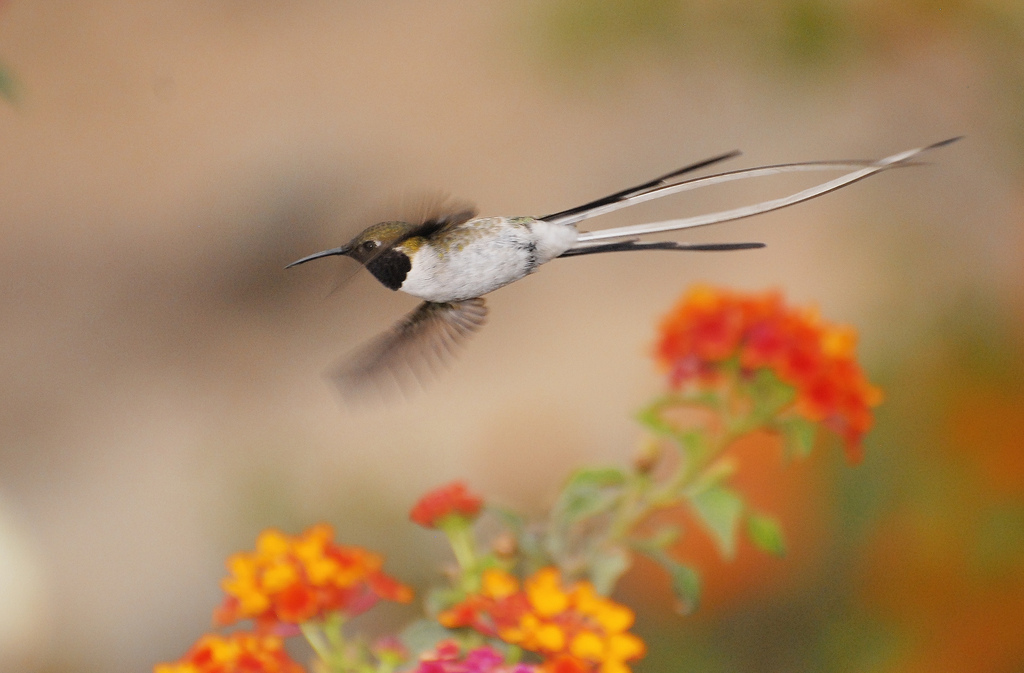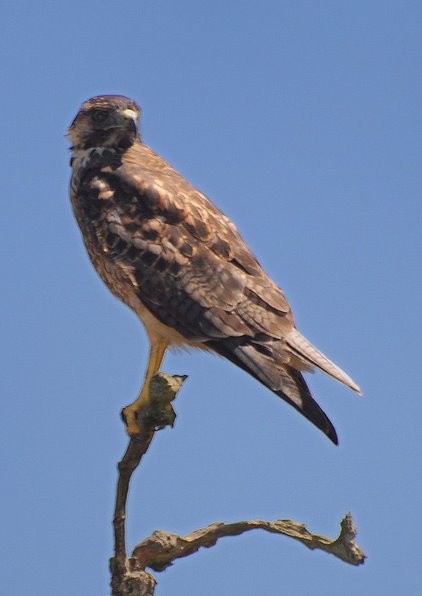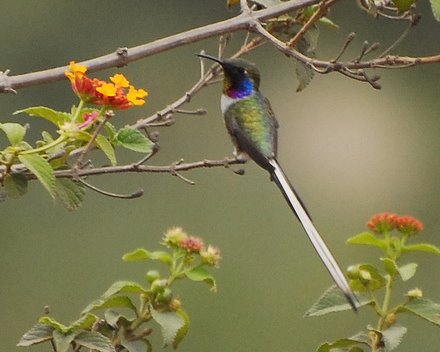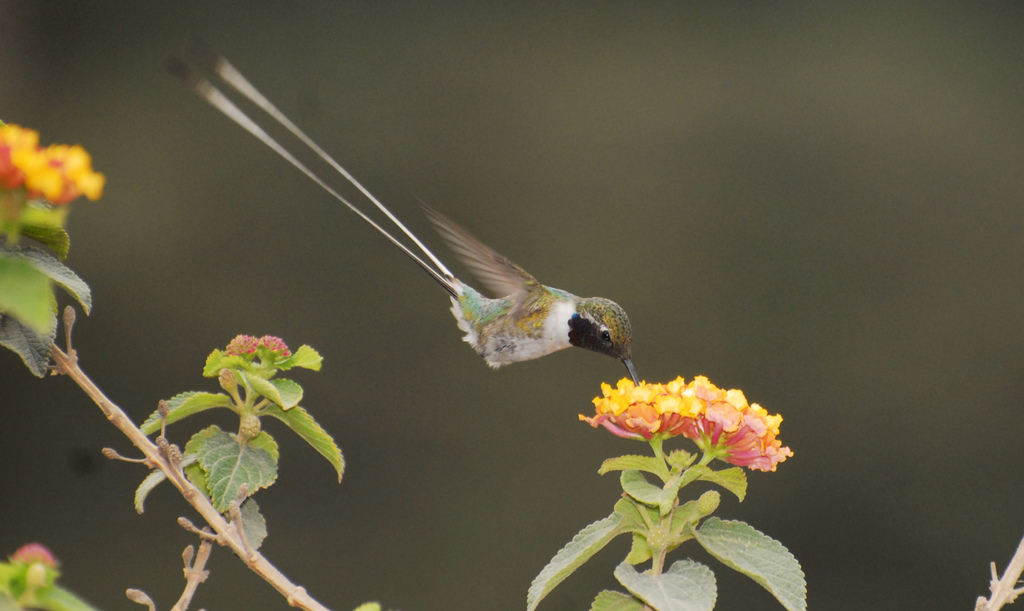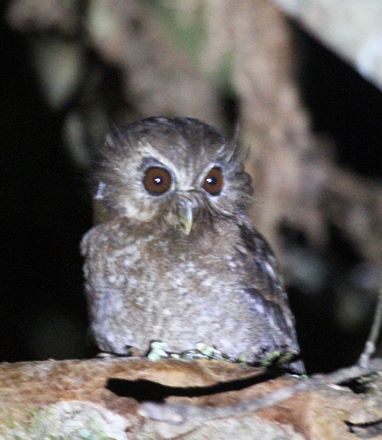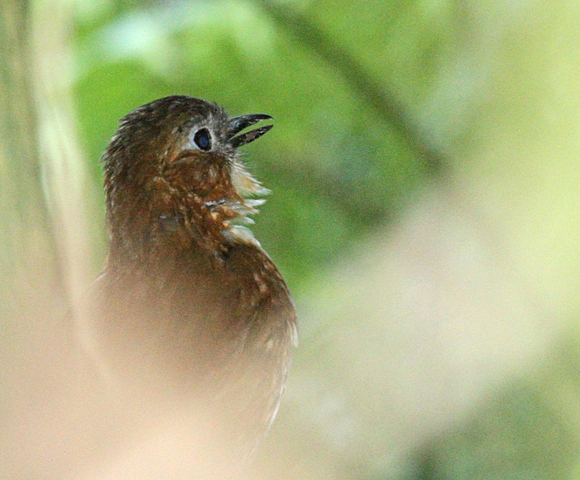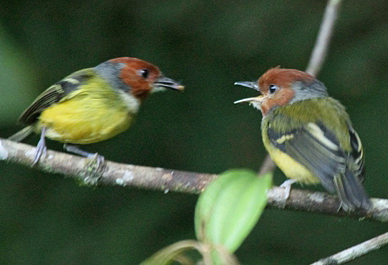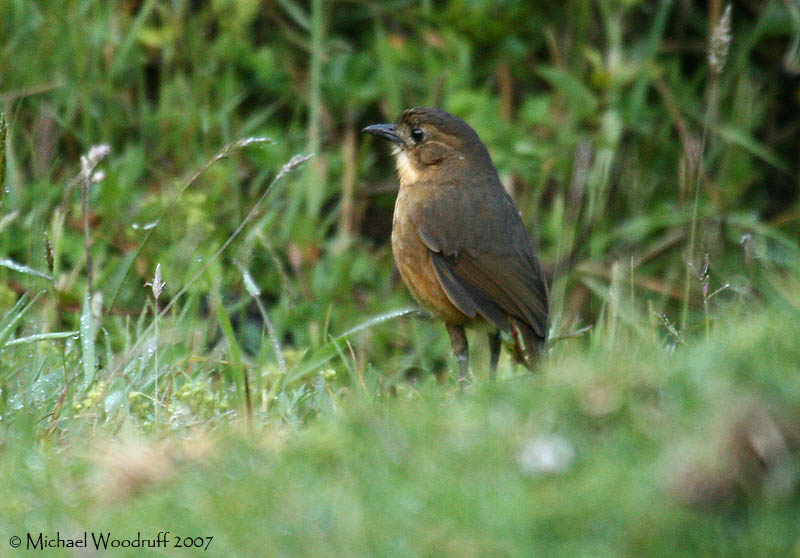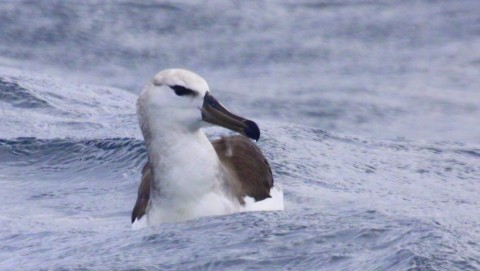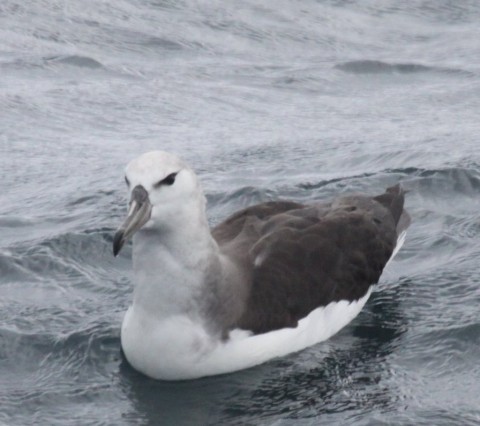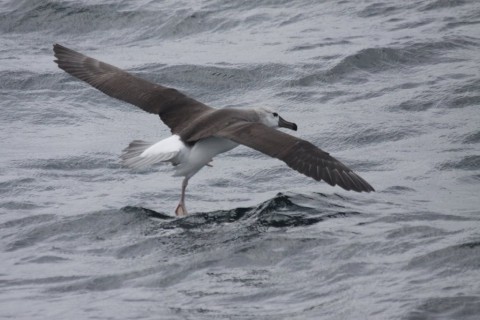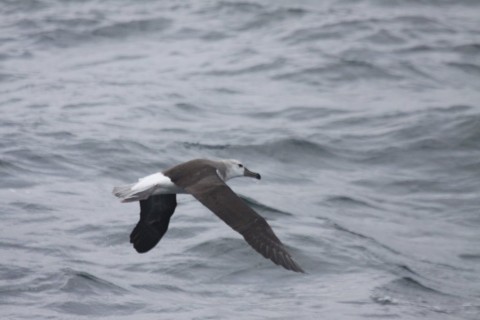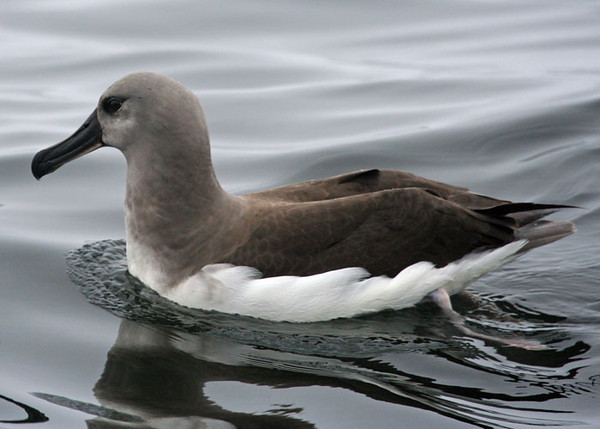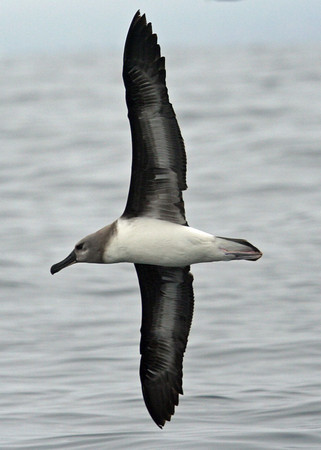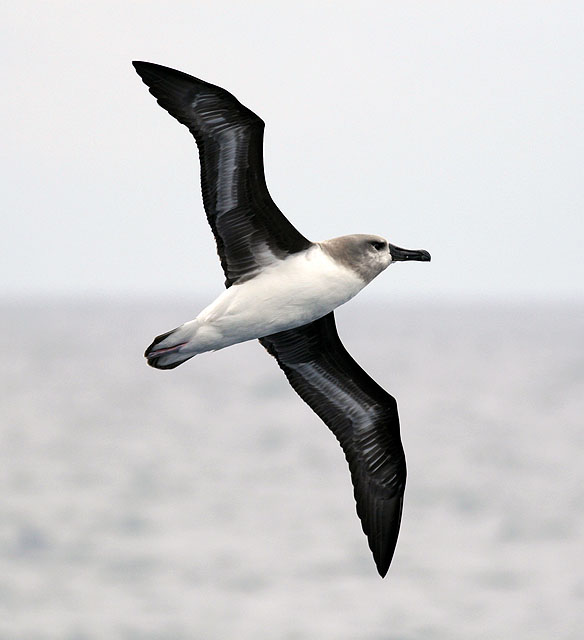- RT @Dendroica Bush Katydid: This nymphal insect was on a Deutzia shrub in the garden. At first I thought it was on… https://bit.ly/aspgNS #
- Oil companies banned from uncontacted tribes' reserve https://bit.ly/ca5QCT (via @Survival) #
- Tweet-up for birders in Lima, Peru. https://bit.ly/b7CpD on May 29 #
- Marsh Diaries Part Three: The May long weekend is eagerly anticipated by people who love the outdoors, and is reco… https://bit.ly/dbp71w #
- Birdlife International and BP – still friends? https://bit.ly/c7mmhX #ecomonday #BP #birdlife #
- Childish Name-calling: Even as the results from the 2010 Oregon Primary Election were still in the process of bein… https://bit.ly/9uzM8p #
- Sheridan Coffey's Birding in Peru blog – day 3. Bosque Unchog. https://bit.ly/cNrj6e #
- Lima Birder Tweetup on May 29. Link is fixed https://bit.ly/cXSwzn @SaraJDizzle @DawnFine #
- A Big Queens Big Day: Part 4, Finishing Up and the List https://bit.ly/bVF7Dt #
- Kolibri Newsletter on line BIG DAY world Record and 20 Antpittas on one tour https://bit.ly/bXvZhc #
- RT @DawnFine Rain droplets on purple: Howdee all, Just a very short post Had very sad news about a Lovely friend… https://bit.ly/9vxgqd #
- Interview with the guy that video-filmed Long-whiskered Owlet https://bit.ly/akbnzJ #
- ReservoirCatz: RSPB to protect rare breeding pair in Kent: The RSPB are, in .. https://bit.ly/bCLTER
– discretion adviced # - He publicado 5 fotos en Facebook en el álbum "Photos Alejandro Tello of Santa Eulalia Canyon and Milloq Bog III". https://bit.ly/bYmFAq #
- Thanks for the RT Dawn! @DawnFine: Lima, Peru Birders who blog, tweet and chirp RT @kolibrix Meetup/Tweetup in Lima. https://bit.ly/asnADx #
- RT @sunkislandbirds: Green Money Washington Post Links Oil Spill Culprit and Nature Conservancy // Treehugger https://bit.ly/cqSwcJ #
- Birds at Jamaica Bay Wildlife Refuge https://bit.ly/aZczDf #
- 2010 – Turning or Breaking Point for Europe's Wildlife?: BirdLife International has launched a groundbreaking new … https://bit.ly/b8mjfu #
- Forest & Bird delivers 4000 anti-mining submissions: Forest & Bird (BirdLife in New Zealand) and other environment… https://bit.ly/bKLcyB #
- Thanks for RT. Will I see you @jpperret: RT @Kolibrix: Tweet-up for birders in Lima, Peru. https://bit.ly/cXSwzn on May 29 #
- ID Challenge: Hint — It's a Waterbird https://bit.ly/dmrCvG #
- Review: Rewilding the World, Caroline Fraser https://bit.ly/a3YQVy #
- Birds and the Gulf Coast Oil Spill https://bit.ly/b74MTH #
- Oil spill’s early Impact on Mississippi Barrier Islands – Video: Audubon Volunteer captures images and discribes o… https://bit.ly/ddMFUl #
- Bluebirds Are Laying Eggs!:
Bluebirds lay one egg per day…will "mine" lay a fourth or fifth?The female blueb… https://bit.ly/9dHEeH #
- Oil found at Audubon’s Rainey Sanctuary – Video: Small amounts of oil from the Deepwater Horizon spill were found … https://bit.ly/9AKU8t #
- RT @Dendroica Leafroller Moth: I found and photographed this moth at E.B. Forsythe NWR (a.k.a. Brigantine) last we… https://bit.ly/coFrcL #
- News from the Philippines: The environmental and human rights group, Alyansa Tigil Mina (ATM), denounces the death… https://bit.ly/bh7JAK #
- Over 300 dead birds are likely Gulf spill victims: More than 300 sea birds, the bulk of them brown pelicans and no… https://bit.ly/9Apnpt #
- Springwatch Wild Day Out event https://bit.ly/atqDUt #
- ReservoirCatz: Smoking hot Geordie Blue Tits: Smokers at a Tyneside business.. https://bit.ly/cVNZFm
– discretion adviced # - He publicado 9 fotos en Facebook en el álbum "Photos Alejandro Tello North Perú". https://bit.ly/cxeNg2 #
- National Bird Conservation Group Opposes Texas Coal Plant https://bit.ly/agN2Kx #
- Pigeon Killers in Pennsylvania Need to be Stopped https://bit.ly/bAJ65u #
- New Long-whiskered Owlet birding site may help protect forest and the threatened Yellow-tailed Woolly-Monkey https://bit.ly/akbnzJ #
- Alaotra Grebe extinction – Do you care?: Today we announced that Alaotra Grebe is officially extinct on the Red Li… https://bit.ly/ciO26s #
- List of extinct bird species: See the full list of Extinct bird species. https://bit.ly/9xVIw0 #
- Wetland aliens cause bird extinction: BirdLife International has announced the extinction of Alaotra Grebe in the … https://bit.ly/dzCDFE #
- Did you see Nate's "now it is not the time for ranting"-rant? A good read indeed. https://bit.ly/b3aBtk #
- Here are some more of Alejandro Tello's bird photos . This time from North Peru. https://bit.ly/bCPxeK #
- RT @Dendroica Oak Leaftier Moth: This appears to be an Oak Leaftier Moth (Acleris semipurpurana). The species can … https://bit.ly/aMBIuz #
- Wilson’s Phalaropes Phalaropus tricolor at Jamaica Bay https://bit.ly/aOXwis #
- Wednesday Wings: Leggy Beauty: Range Map from Marbled Godwit fact sheet on All About Birds https://bit.ly/b1ALOB #
- Birding in the Finger Lakes: Two of my favorite things to do in the Finger Lakes are to admire the scenery and to … https://bit.ly/9J45Fv #
- Parrot Once Thought Extinct Now Numbers Over 1,000 – Huge Environmental Victory for Colombia https://bit.ly/dsFJrW #
- May Moths https://bit.ly/94MWSW #
- Think Tank Photo’s “Bag in a Bag” Contest: Ever since I bought my first Think Tank Photo camera bag – the Airport … https://bit.ly/blkslK #
- Our guide Juan Jose Chalco started a Parrot hunting trip in Tarapoto with Parrot researcher Thomas Arndt today. NO… https://bit.ly/bWJ0rP #
- Regent Honeyeaters at home in the wild: Thirty-six of the 44 captive-bred Regent Honeyeaters released in the Chilt… https://bit.ly/bdTtvi #
- Yellow-eared Parrot – from “Critically Endangered” to “Endangered.” https://bit.ly/c0yjmU #
- Review: A Nature Guide and A Heritage Guide to Boundary Bay https://bit.ly/aH8Ucy #
- RT @Dendroica Cape May Notes: Last week I was in Cape May for a few days to see the late stages of spring migratio… https://bit.ly/arncLr #
- RT @DawnFine On the Road again…..: Howdee all, Its that time again…Moving on… Going norther to visit more family… https://bit.ly/aJA4b1 #
- Detroit Airport Wasting Resources? https://bit.ly/cQ6dtW #
- Where Are You Birding This Final Weekend of May 2010? https://bit.ly/cakq76 #
- Peruvian Government Ramps up Habitat Protection for Endangered Bird Species https://bit.ly/akdNLa #
- Gulf Coast oil spill: What you can do https://bit.ly/cliy1a #
- Daily update: Jens and Kathy Munthe just came back from Manu road and landed in Lima this afternoon. Their trip… https://bit.ly/bYyWqI #
- RT @tuftedpuffin: RT @Funny_News: Aussie cat makes clean getaway from washing machine (AFP) https://dlvr.it/1GHj9 #AFP #
- ReservoirCatz: Al Qaeda ruin White-tailed Plover for almost everybody: The n.. https://bit.ly/dez5vH
– discretion adviced # - Black-throated Brown Warbler Dendroica domesticus https://bit.ly/dqkslC #
- Nature News #9: Bird News
A hotel in Richmond, BC is under investigation by Environment Canada for removing a Cana… https://bit.ly/aqe4Os # - RT @Dendroica Loose Feathers #240: Least Tern / Photo by Steve Maslowski (USFWS) Birds and birding newsAt least 32… https://bit.ly/df8EtR #
- Daily update: The Young birders Manu community trip ended with Harpy Eagle sightings at a nest near Puerto… https://bit.ly/9EGbr6 #
- Lima birders: Who is joining Alejandro and me in Parque Ramon Castilla and Pantanos de Villa tomorrow. Free of… https://bit.ly/9NDltg #
- When moths attack… https://bit.ly/90q4xs #
- Seven Photos of Bluebirds: Spent the morning photographing Eastern Bluebirds in the hopes of getting a few nice on… https://bit.ly/d1hQ3C #
- RT @Dendroica Killing an Oil Spill: Handlers cleaning an oiled Brown Pelican / Tami A. Heilemann-DOI Yesterday BP… https://bit.ly/bHnuTI #
- Discovery Channel – How To Kill Bats https://bit.ly/cFTqhP #
- Tweet-up at Pantanos de Villa produced a very rare Lima bird Wilson's Plover. Lima lifer for me. YES! #
- Tuscany: Birds and Art 2010: Join Marco and me in 2011!
Of all the tiresome tasks of travel, continuous packing an… https://bit.ly/a5vkf3 # - Sheridan COffee's account from Peru. Day 7. Abra Porculla. https://bit.ly/bYgteX #
- Herps in Rockland County and Orange County https://bit.ly/cuDFch #
- The Birds of Il Poderino: The fields and orchards of our inn at Manciano were gratifyingly birdy, and by the time … https://bit.ly/aLKahy #
- Twitter Weekly Updates for 2010-05-30 https://bit.ly/b9vqw6 #
- Chesapeake Bay Boat Tours: The Captain Barry Experience: If you ever have a few hours to spend near Chincoteague B… https://bit.ly/cEj3fQ #
- RT @Dendroica Top Kill Fails; What's Next?: NASA image acquired May 24, 2010 Yesterday, I was unsure whether the "… https://bit.ly/crYCSn #
- Scouting Provence 2010: The 2010 WINGS tour of Southern France began officially tonight with an introductory meeti… https://bit.ly/cTqQh1 #
- Saw a fantastic Spanish film yesterday. Cell 211. Best film I have seen in years. Spanish film night again tonight with "Yo tambien" #
Powered by Twitter Tools

